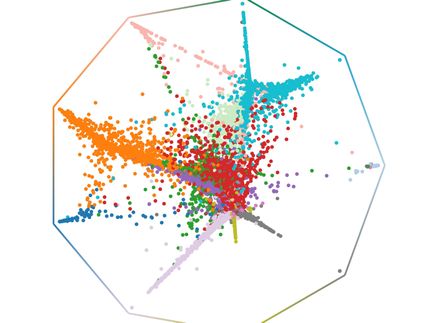Taste of ‘smoky’ tomatoes is caused by one missing enzyme
The absence or presence of one specific enzyme causes tomatoes to be described as ‘smoky’ or not by taste experts. This is the result of research by Wageningen UR, which studied the taste of 94 tomato varieties using expert taste panels. The tomatoes were also evaluated for their metabolite content, such as aroma volatiles, and for their DNA composition. When a tomato plant is able to produce the identified enzyme, it converts precursors of the ‘smoky’ volatiles into others which are odourless and tasteless. As smoky tomatoes cannot produce this enzyme, the precursors of smoky volatiles are not converted. In these tomatoes, smoky volatiles can be released upon biting and chewing, giving rise to a smoky aroma. This new knowledge can help tomato breeding companies to select more specifically for flavour characteristics. The research was performed within the framework of the Dutch genomics Initiative, Centre for Biosystems Genomics (CBSG).
Tomatoes come in many varieties and sizes. Most supermarkets sell around ten different sorts, many of which are especially popular for their flavour. Because preferences differ, some people choose one variety, while others choose another.
Wageningen UR supports Dutch tomato-breeding companies in developing tomatoes with a good, either new or existing, flavour. Some of the Wageningen scientists study the flavour of tomatoes that are already ‘in the pipeline’ at the breeding companies. This allows these companies to market new varieties with confidence. Other Wageningen scientists look at how and why the flavours of the tomatoes vary.
When taste panels describe the flavour of tomatoes, they use words like ‘sweet’, ‘sour’, ‘mealy’ and ‘tomato aroma’. Whether something tastes good or bad is a matter of preference. But taste experts are in fact able to indicate to what extent tomatoes are ‘sweet’ or ‘sour’. One of the flavour characteristics the experts use is ‘smoky’; a taste that is similar to the typical flavour of smoked cheese, meat or fish. Roughly half of the tomatoes studied were classified as ‘smoky’ by the taste experts. The scientists at Wageningen UR discovered the mechanisms underlying this ‘smoky’ flavour.
The scientists compared the results of the taste experts to their analysis of the components in the tomatoes and discovered that all ‘smoky’ tomatoes contain three types of aromatic volatiles. These volatiles are stored in the fruit after coupling to a double sugar molecule, as disaccharides. While the three resulting components are tasteless by themselves, when a tomato is cut or eaten the stored volatile-disaccharides are quickly cleaved and the aromatic volatiles are released into the air. These ‘breakdown products’ give the tomatoes a ‘smoky’ flavour.
In some tomatoes the three disaccharides are enzymatically coupled to a third sugar molecule and stored as trisaccharides. These trisaccharides cannot be broken down to smoky aroma volatiles when tomatoes are cut or eaten. Therefore these tomatoes do not have a smoky flavour. Thanks to a combination of DNA analyses, gene expression analyses and metabolite analyses, the Wageningen scientists found the gene coding for the enzyme that converts ‘smoky’ disaccharides into ‘non-smoky’ trisaccharides. In smoky tomatoes the identified gene is ‘cripple’ and no longer codes for a functional enzyme. As a result, the smoky precursors cannot be converted into the non-tasting trisacharides.
The Wageningen scientists hope that the new knowledge on the background of the smoky flavour of tomatoes will help breeding companies take a more targeted approach towards specific flavours.
The results have been published in the scientific magazine Plant cell.



















































